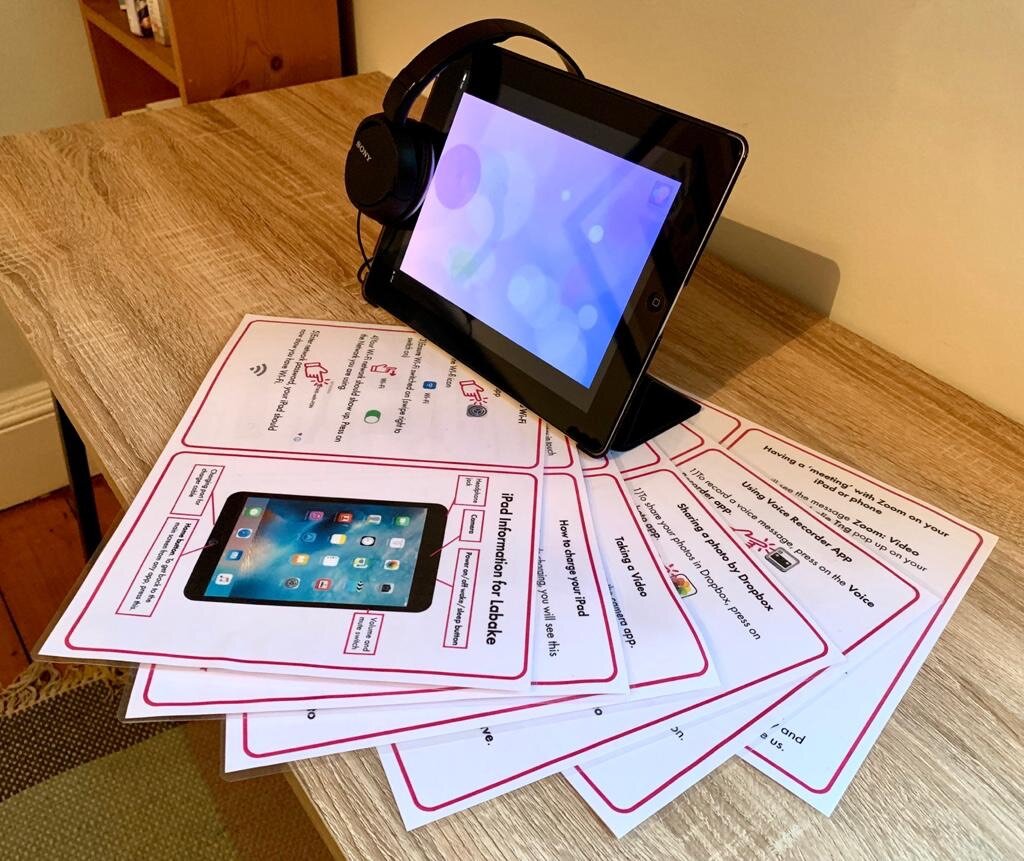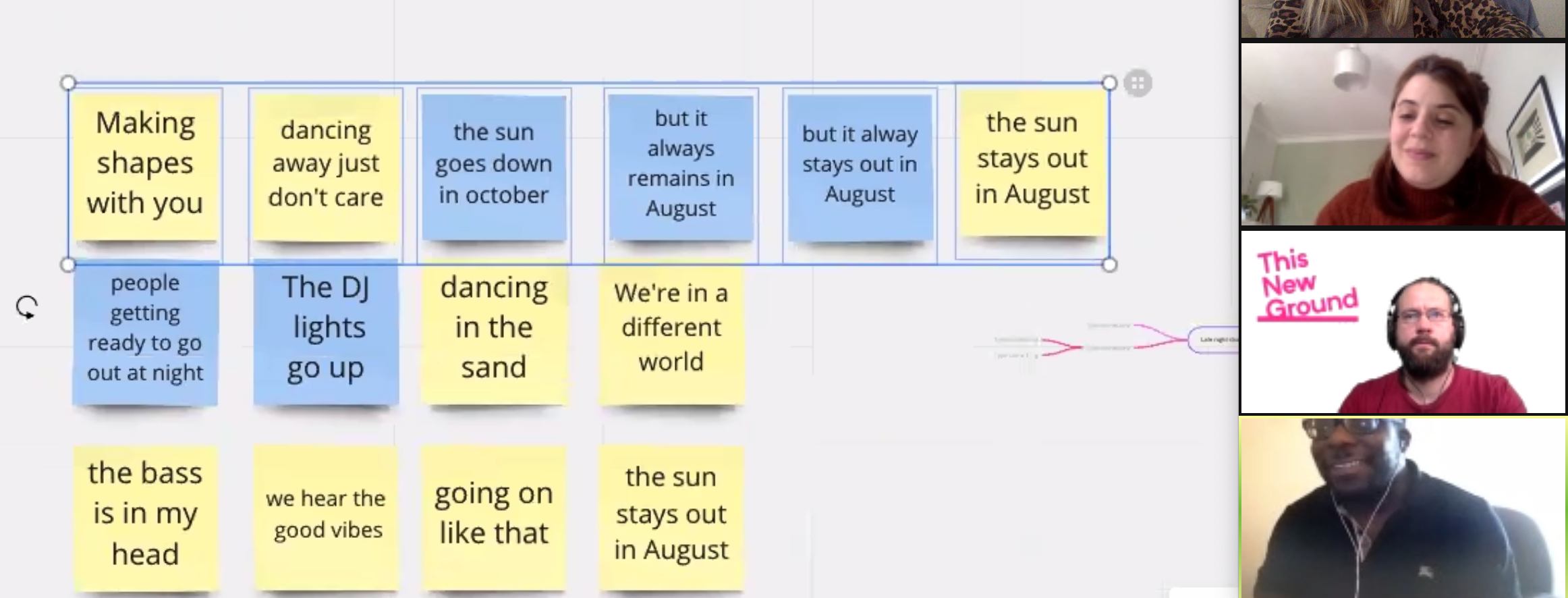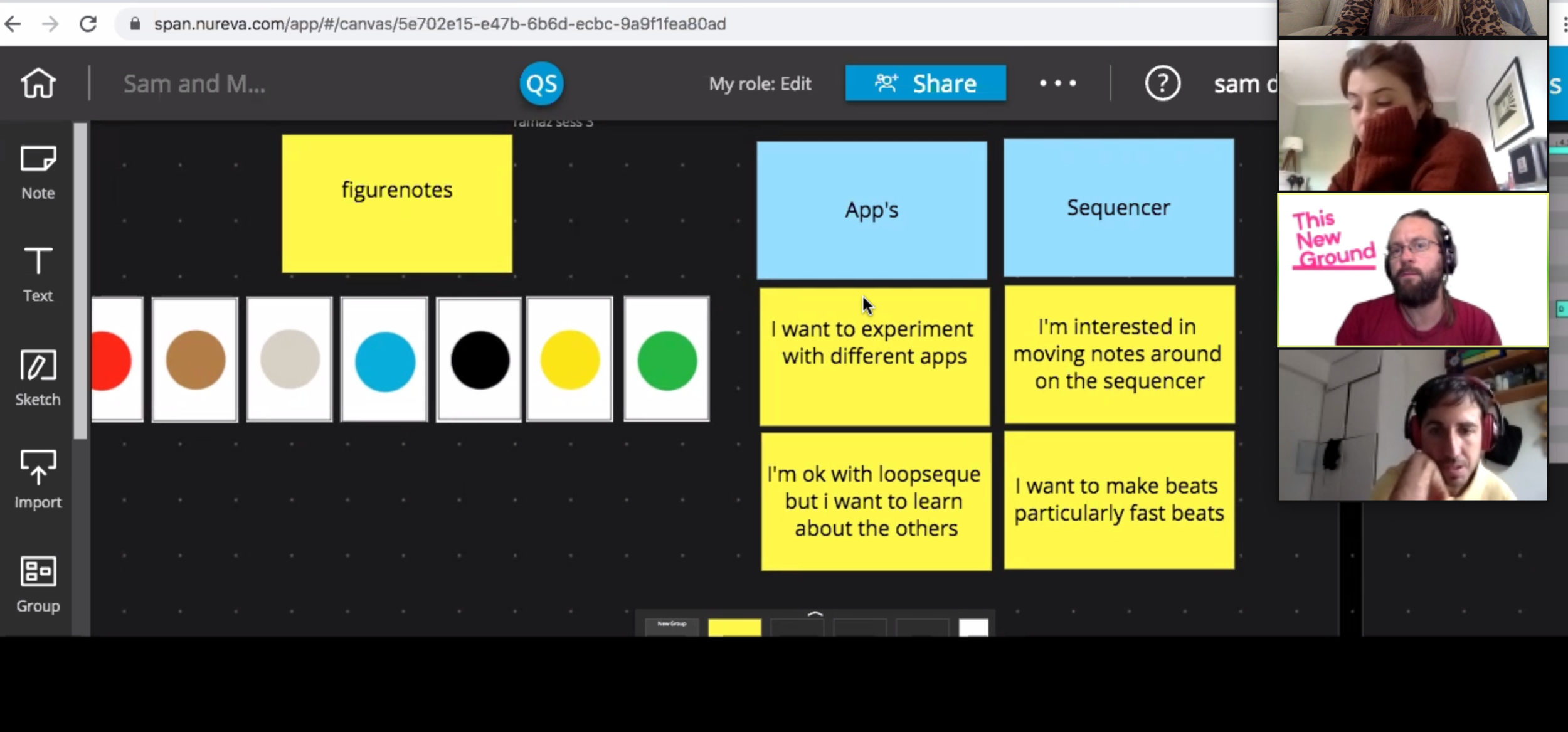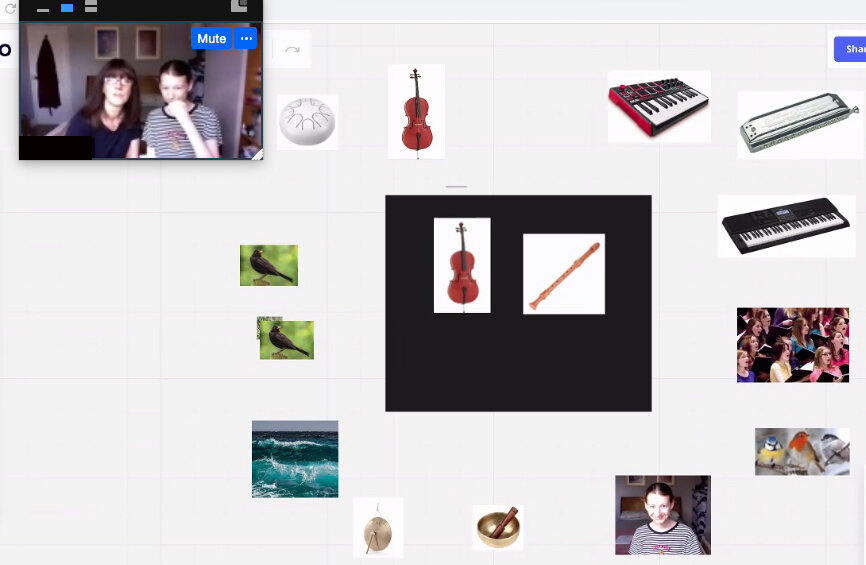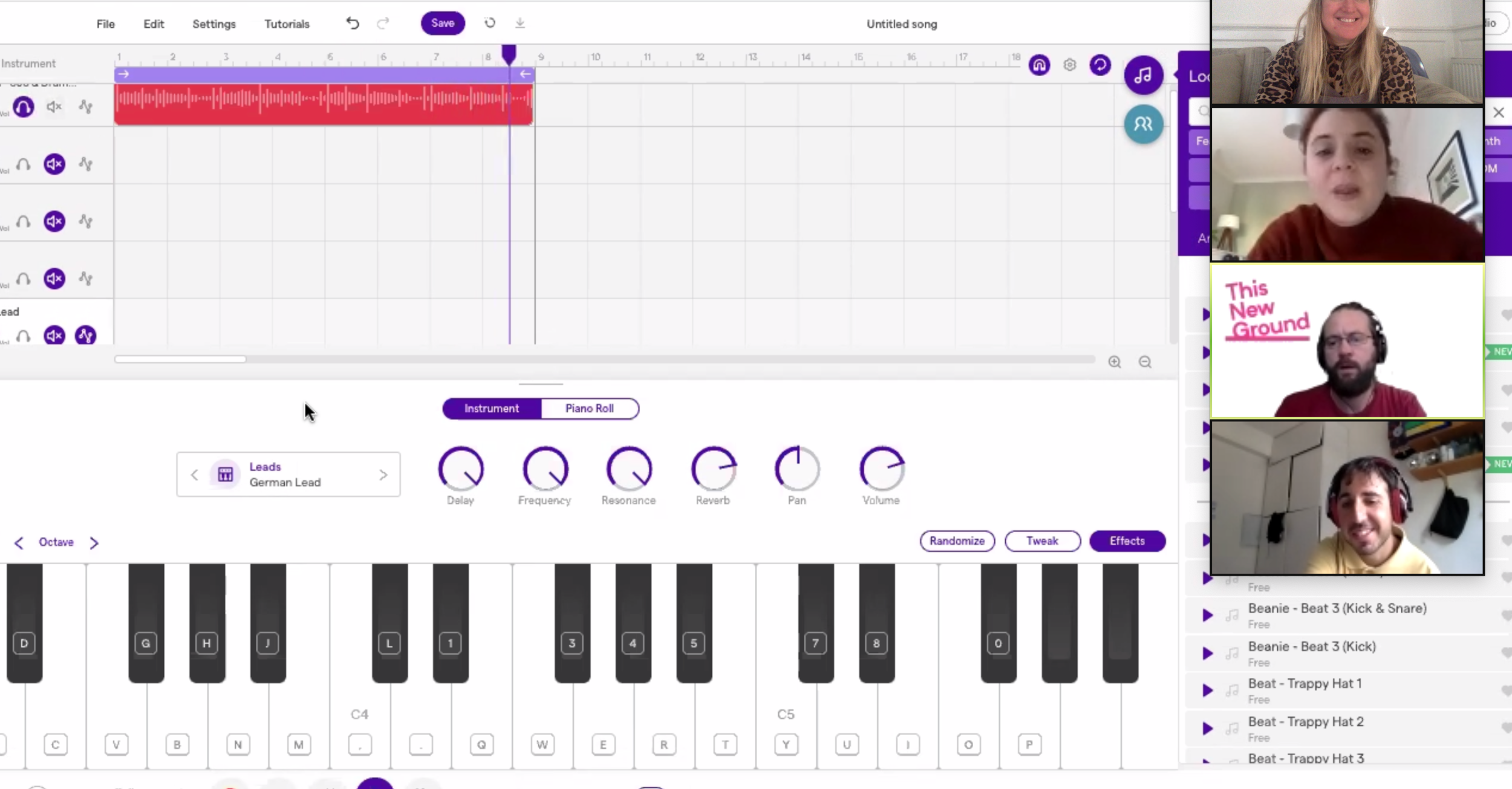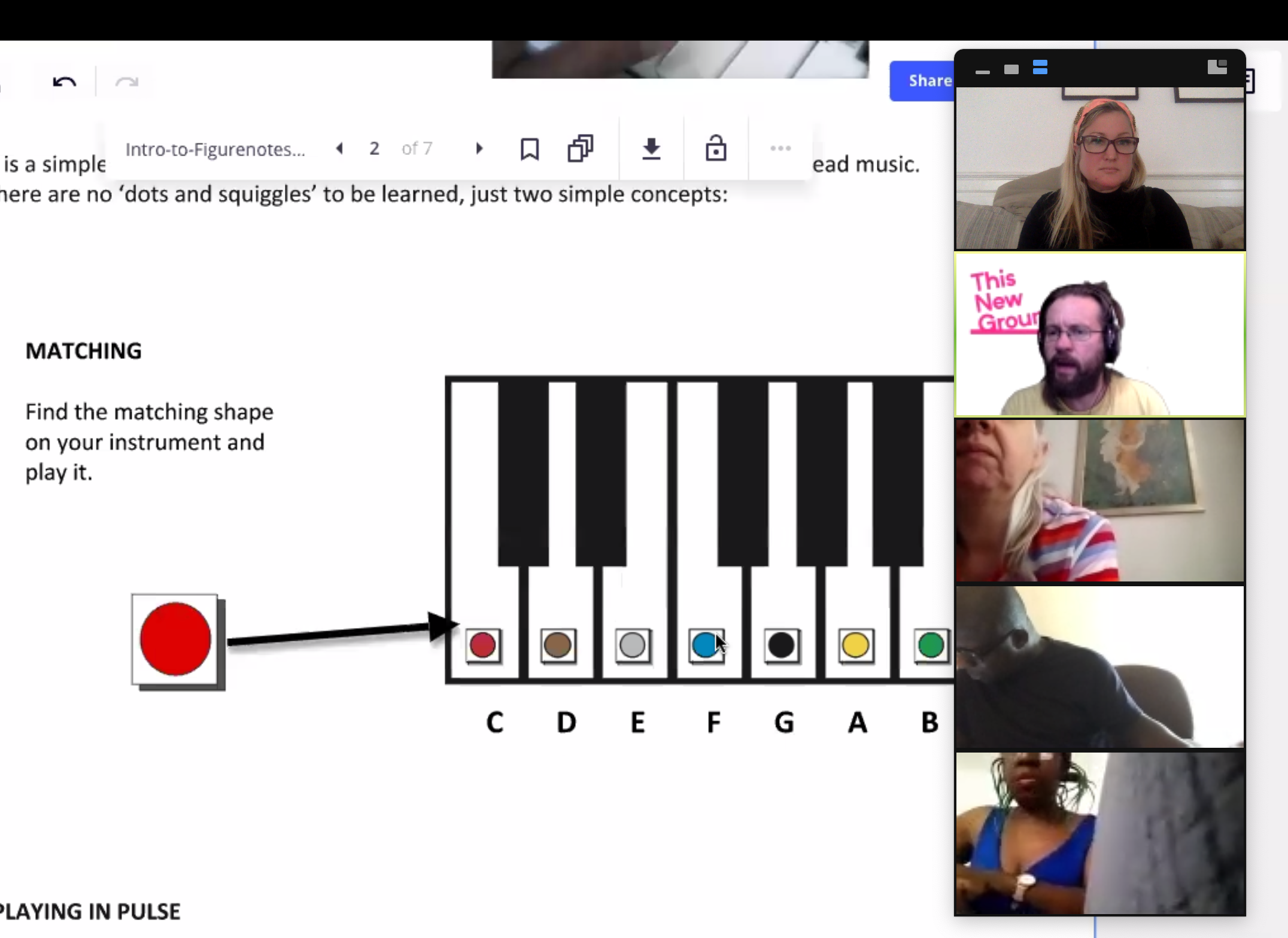The Bridge Project
Overview
Before the lockdown, This New Ground Collective was meeting for weekly creative activities at our local community centre. Since the centre has been closed to the public we have been connecting remotely for social activities and creative workshops. These sessions have been hosted by TNG facilitator’s, Nathalie Russell-Clarke, Lucy Groenewoud and community musician Sam Dook from Lifesize CIC.
The sudden change of circumstances brought up a set of challenges we had to overcome. Many of our participants did not have access to digital devices at home and had never used a computer or iPad to speak to people before. We as facilitators were working in new territory. We needed to research and develop the best inclusive practices for running digital remote activities. At the same time, we knew we had to be agile and responsive to our participants, many of whom had become isolated without pathways to their community or opportunities for engagement.
Between March - December 2020 This New Ground have delivered:
20 art packs to people with a learning disability in Hammersmith and Fulham
12 iPads accompanied by accessible guides to people with a learning disability in Hammersmith and Fulham
130 hours of group creative workshops for people with a learning disability in Hammersmith and Fulham
35 hours of personalised creative development workshops for people with a learning disability in Hammersmith and Fulham
18 hours of weekly community socials for people with a learning disability in Hammersmith and Fulham
A playlist of original music co-created by artists with a learning disability
A music video co-produced by our participants during lockdown
A physical exhibition at Bush Theatre of participant’s original artwork
We saw that the lockdown was not only an emergency, but an opportunity to accelerate and explore new ways of promoting the inclusion of people with a learning disability in the digital world we are all building.
Downloadable Resources
As part of our research findings we have created some free resources that can be used as tools to support and inspire similar inclusive projects. Visit our Downloadable Resources to access them.
Inclusive Digital Engagement Blueprint
Frameworks and foundations
Establishing shared frameworks and foundations is a vital part of any creative inclusive project, and even more necessary for projects undertaken remotely through digital platforms. Before the creative work could begin, we produced visual guides, timetables and starting points to ensure all participants felt safe and supported entering into the unknown. With diverse needs and varying levels of support at home, we made sure there was clear structure to our activities - all the while leaving room for freedom and creative exploration.
Custom device set-up
Many of our participants did not have access to digital devices at home or experience using them. To ensure that participants were embarking on the project with the same toolkits, we sourced iPads and pre-loaded them with a curated selection of apps and accessibility settings.
Easy-read guides
With different levels of support at home, it was essential to provide participants with easy-read resources to ensure there were no barriers to engagement. Each iPad was accompanied by accessible guides, tailored to each participant, from using and charging the device, to taking photos, navigating different apps, like Zoom, and staying safe online.
Visual, accessible timetables
Without the familiar routines of weekly in-person activities in our local community centre, participants required new forms of support to adapt to and stay regularly engaged with the online programme. We provided weekly visual timetables, session plans and reminders tailored to the needs of participants. Whether they preferred to stick a print-out on their fridge or receive a WhatsApp message, we did what we could to understand the best approach for each individual.
Innovative ways to communicate
Non verbal communication and different forms of listening are central to all inclusive approaches. However, with the additional limitations of collaborating via Zoom, these principles are more important than ever. We could not rely on interpersonal quality of bodies in space or indeed guarantee the quality of internet connection, video or audio. In order to individually engage with our participants, it was essential to experiment with new methods of online communication - and be open to all different means of expression.
Screen annotations
Early on in our process we identified Zoom as the most accessible platform for our remote meet-ups. This was largely due its range of additional features, such as screen annotation, which became a useful visual tool to allow participants to take-over the screen and express themselves non-verbally.
Improvisational non-verbal dialogue
Limited to the two dimensional screen, we needed to experiment with different forms of “total communication”, unlocking dialogue between participants, through gestural, visual, interpersonal and environmental cues. To break the pattern of reciprocal listening-and-talking that tends to dominate on Zoom, we introduced a range of physical exercises - such as asking participants to embody musical phrases, or conduct the group as though it were an orchestra, to participate in musical call-and-response or conversational mark-making using art materials.
Visual Scrapbooks
For successful inclusive collaborations to take place, we needed ways to establish shared worlds between the participants and facilitators. Drawing on the idea of the scrapbook, we used the software platform Miro as a visual tool to help participants communicate, reflect, share inspiration and collaborate.
Artistic open calls
To enable participants to engage and explore their creativity outside of scheduled Zoom sessions, we sent out creative art packs, demoed accessible music making apps and shared weekly art activities that they could do at home. Within a private sharing forum, the group was invited to participate in conversations about each others’ work, ideas and inspiration - giving them the space and time to respond and react in their own way.
Participant led collaborations
The “two dimensional” online space presents a number of difficulties when it comes to promoting choice and freedom in our inclusive work. For example, group conversations on Zoom only allow for one individual speaking at once. There is little room for organic dialogue to develop and facilitators are often forced to nominate speakers and direct the flow of the conversation. As a result, it was important for our facilitators to implement ways to address the power balance and create innovative approaches for participant led engagement, especially during the creative process.
Accepting creative offers
As facilitators, it was essential to be open to different ways of working towards creative outcomes - always being responsive and following the lead of every individual participant. Whether it was an idea that interested participants, or some work that they had created in their own time, we allowed these offers and impulses to set the tone and direction of our sessions - even when that meant a change of plan.
Tools and resources to maximise creativity
It was important to equip participants with the accessible tools and resources to make meaningful creative decisions and co-create on an equal footing to facilitators. Before workshops began, participants were introduced to apps for music-making and design, and delivered creative packs including Figurenotes cards and dice - an accessible notation system that enabled participants to compose their own musical phrases and lead the creative process.
Screen takeovers and collaboration tools
Making use of Zoom’s sharing features, we were able to give participants control of the facilitator’s screen - providing them direct ways to remotely manipulate sounds within their compositions and handing over control of detailed aspects of production. We were also able to use visual collaboration software, like Miro, to improvise and capture lyric ideas and allow participants to rearrange them into new phrases and verses. In addition, the same tools offered alternative ways to mix and orchestrate, providing visual cue cards for participants to select and group into their own original arrangements.
Conclusion
Our research has not only provided us with new tools and approaches to remote collaboration, but opens up vast opportunities to extend our reach, explore new creative possibilities and embed digital tools into in-person activities. We continue to ask ourselves some burning questions:
How might This New Ground stay agile in changing social and environmental conditions?
How can these digital tools and skill-sets increase the scope and quality of the art we create?
Can we use this blueprint for remote activity to reach new participants and create impact beyond our community?How can we influence the tech, social and arts sectors with our learnings and vision?
Have a listen to some of the original compositions co-created by participants during The Bridge Project.
Let’s connect
If you are interested in learning more or collaborating with This New Ground, contact me at nathalie@thisnewground.com


